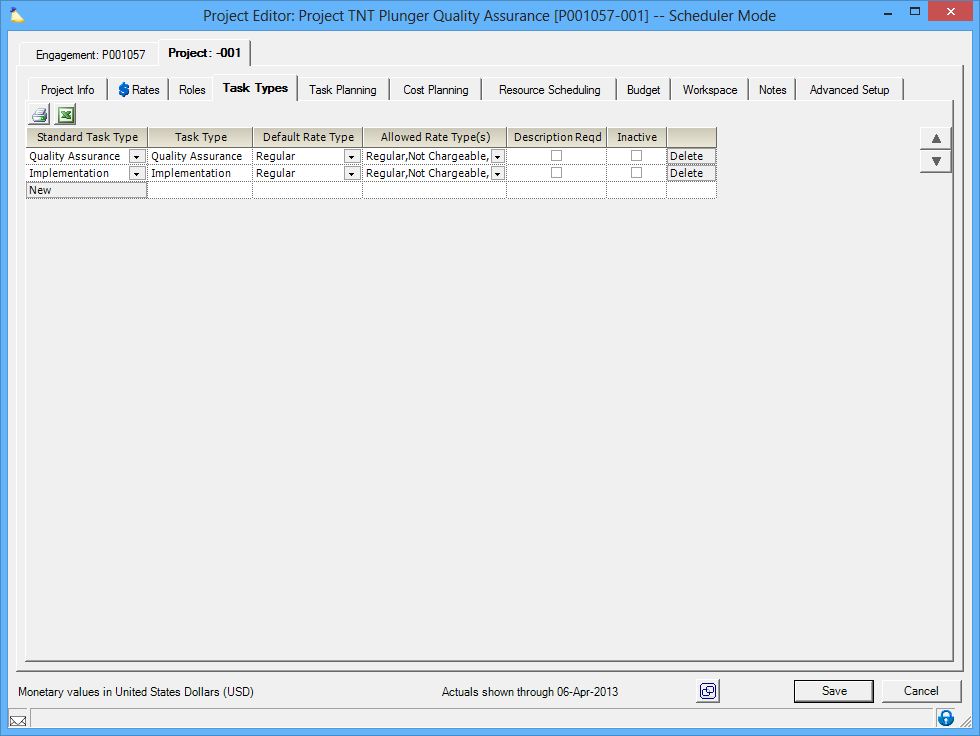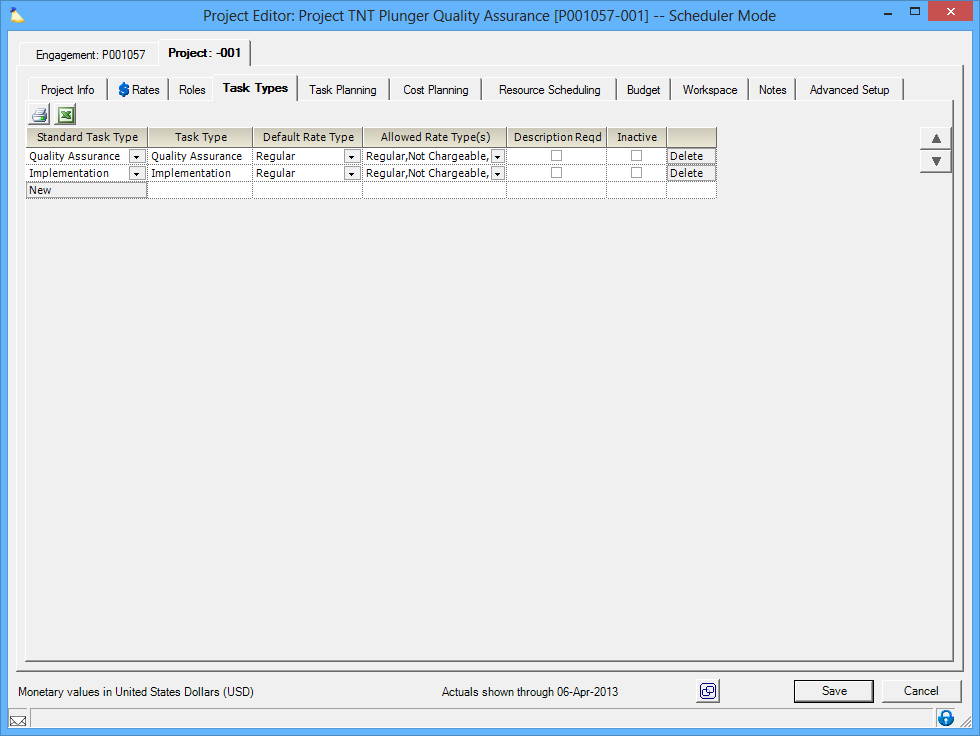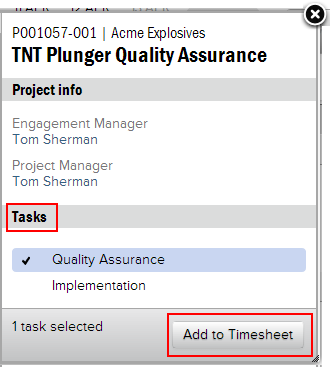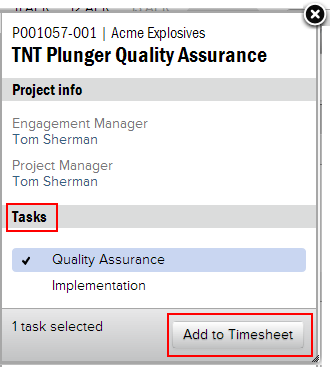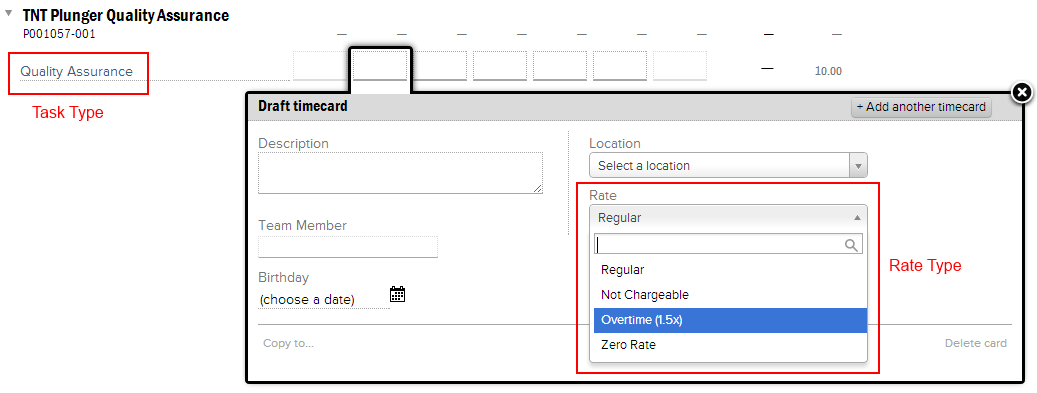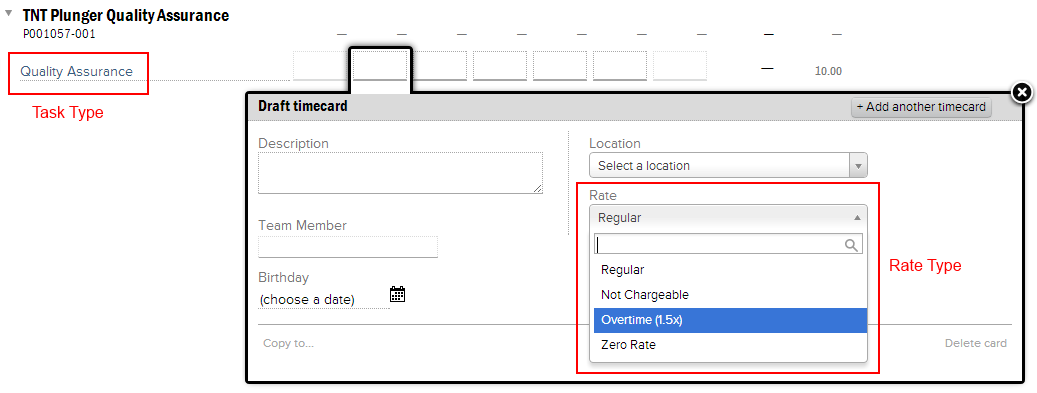| Excerpt | ||
|---|---|---|
| ||
specify the tasks on a project and how they map to client billing rates |
...
| Tip | ||
|---|---|---|
| ||
|
Permissions and Settings
...
The table below describes each of the columns in the grid. These also explain how Projector handles entered time on the administrative side of things.
Column | Description |
|---|---|
Standard Task Type | Standard task types are used for grouping time into high level buckets. You can then run reports and analyze this grouped time. The choices in the list are set at the installation level through the Standard Task Types Editor. You may be wondering why this column exists if the next column is Task Type. Isn't this information redundant? The reason is two-fold. First, Standard Task Types are limited to specific choices whereas Task Types can read anything. This ensures that time is always bucketed into a set category for analysis. In addition, by having a free-form text field for Task Type, your project managers have the freedom to title the task in a way that makes sense for the customer. For example, at an organizational level you only categorize by "Quality Assurance." But your client expects you to break this down into more granular tasks (see screenshot below). These in turn can be shown on the client's invoice. |
Task Type | See the explanation for Standard Task Types for a more detailed example on how task types are used. This free-form text field is a way to categorize work. Your resources will choose to add these tasks to their timesheets. Task types names are limited to 50 characters. Once added to their timesheet, they enter their hours against the task. |
Default Rate Type | What rate type should all newly entered time use? Rate types are defined on the Project Rates Tab. |
Allowed Rate Types | Of all the rates defined on the Project Rates Tab, which ones are available in time entry? |
Descriptions Reqd | Check this box if you would like to require resources to provide a description for time reported. If a user tries to submit time without a description, it is automatically rejected. If on the Project Info Tab you have the checkbox ticked to require time card descriptions, then this column will be grayed out - reason being, descriptions are always required! |
Inactive | Check the box to make the task type inactive. Resources cannot submit time, time cannot be transferred to, and detailed task management cannot be associated with inactive task types. |
New | Create a new task type row. The Standard Task Type, Task Type and Default Rate Type are required. |
Delete | Delete the current row. You cannot delete tasks in the following circumstances, only mark them inactive.
|
Arrow Buttons | Reorder the task types. The order is how your resources will view them in time entry. |
...
A useful way of thinking about this screen is to think about it from the time entry perspective. How do the choices you make here affect time entry? In the screenshot below you can see what your employee will see in Enter Time. On the left they find the proper project + task type. Then on the right they enter their hours and a rate type like Overtime.
Rate Modeling
Rate modeling allows Projector to model complex contract rates. For example, your contract with a client may specify that travel rates for a consultant may be lower than the rate when they are actually working, perhaps 50%. This aspect of the agreement is easily handled by creating a travel rate type and reporting time to it when appropriate. The following are some example rate types used in Projector. Feel free to use these or define your own.
...
